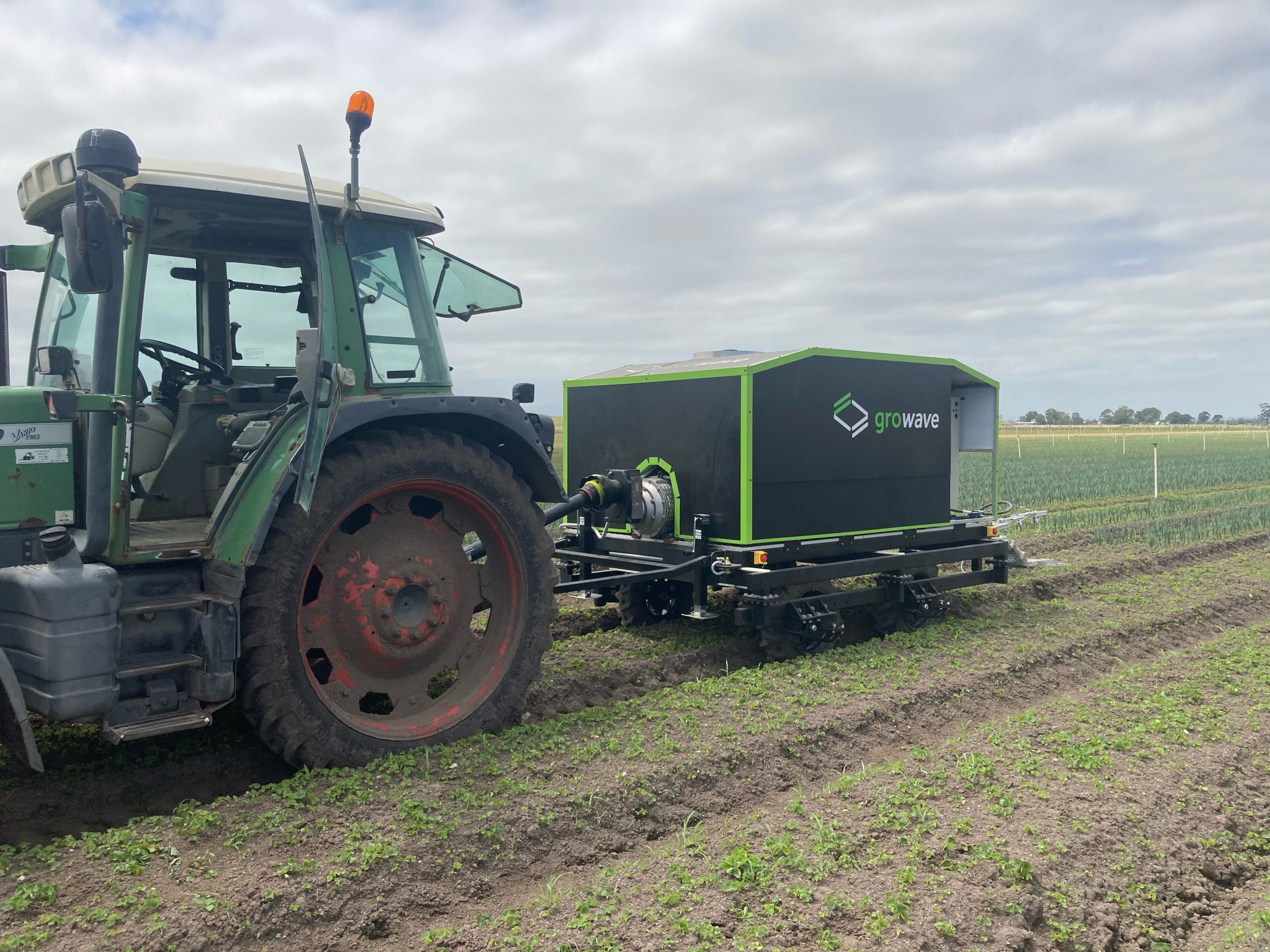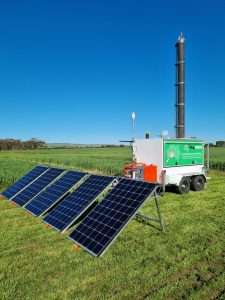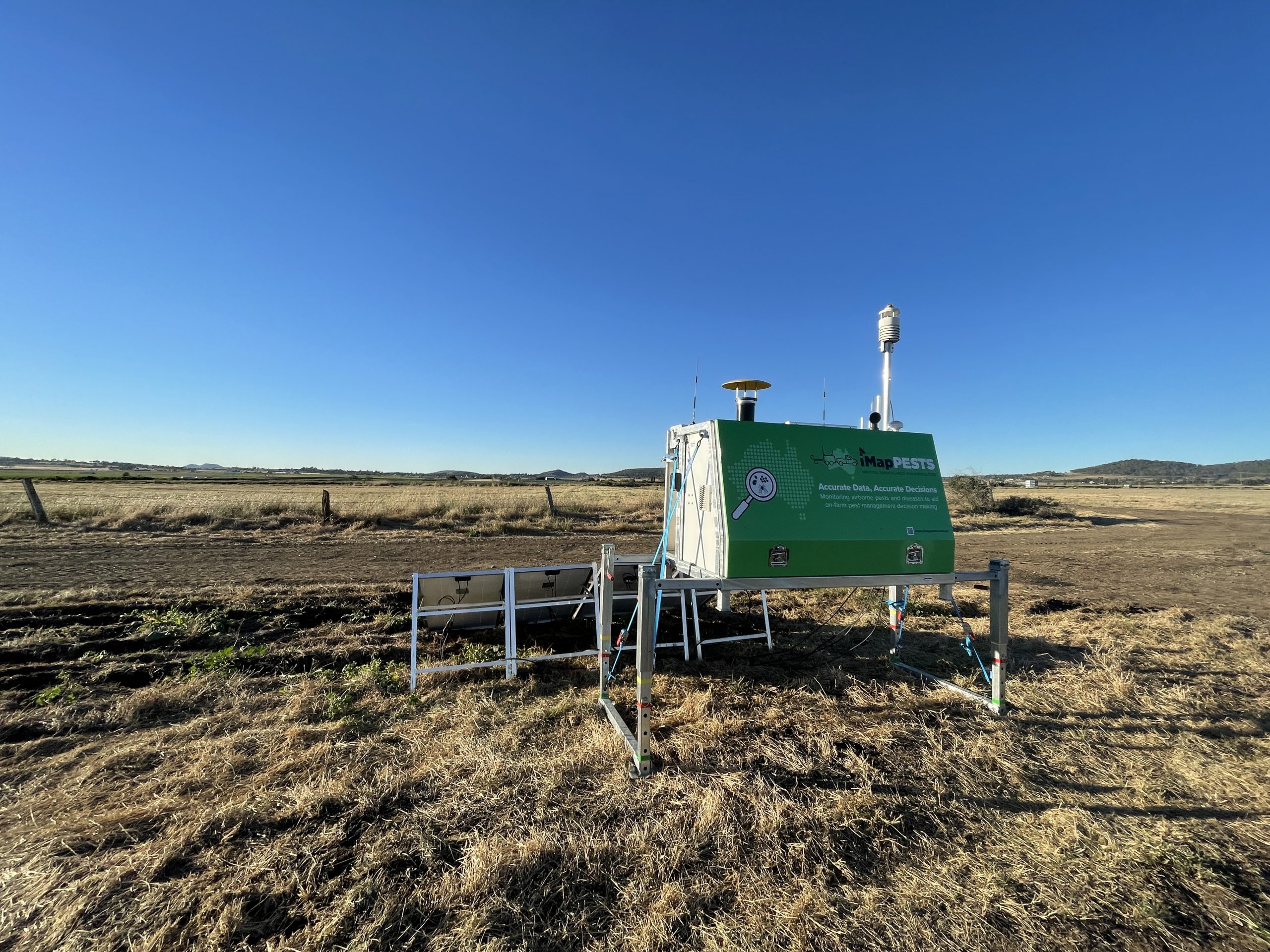
Sustainable farming practices put to the test at demonstration sites
25 November 2021
Safeguarding Australian veg from seedy biosecurity risks
25 November 2021Despite ongoing movement restrictions around the country, the iMapPESTS team has demonstrated a successful rollout of the new and improved mobile surveillance units across multiple locations around Australia. As the project heads into its sixth year, the smart surveillance system takes focus on showcasing the benefits of the pest and disease monitoring technology to industry. Shakira Johnson provides a project update.
The iMapPESTS: Sentinel Surveillance for Agriculture project has delivered a suite of new surveillance and diagnostics tools. These tools are driven by industry needs following extensive research and development into a flexible, cost-effective system using the latest technologies.
Australia’s agriculture and horticulture industries are working together in a unique collaboration to develop a national surveillance system capable of rapidly monitoring and reporting the presence of airborne pests and diseases for multiple agricultural sectors, including viticulture, grains, cotton, sugar, forestry and horticulture.
iMapPESTS is made up several sub-projects, each focused on the research and development of a national surveillance system that delivers accurate data for improved pest management on-farm.
The system comprises of advanced pest and disease surveillance, and new approaches to diagnostics, including a suite of custom-designed mobile surveillance units (sentinels) that incorporate specialised trapping equipment and technology.
The information generated by the system could be used by industry to guide crop scouting and crop protection decisions. During this proof-of concept phase of the system, the project is reporting on a handful of high-priority airborne pests and diseases across all plant industries, but also has the capacity to monitor targets of biosecurity concern in the event of incursion or extension of range.
Adaptive response to COVID-19 yields cost-effective, flexible solutions for industry
Following the first remote deployment of the prototype sentinel (Sentinel 1) in early 2020 to Cairns in far-north Queensland, the COVID-19 pandemic struck and Sentinel 1 was withdrawn from its trial and returned to its home base in Adelaide.

Prototype sentinel, Sentinel 1 deployed at the Mid-North High Rainfall Zone, Northern Adelaide Plains. Image courtesy of Andrew Baker from Data Effects.
During this time, the project took advantage of the situation by taking learnings from the long-distance travel required to deploy the unit remotely and outcomes from the six months of in-field trials and adapted the plan for future sentinel units.
iMapPESTS has delivered a suite of seven sentinels that have been adapted to provide a more-effective, flexible range of options to meet various industry needs. The sentinels range in size, deployment method (trailer, skid, modular unit) and composition of traps. Every sentinel looks unique but all seven share similar features – each is equipped with several airborne samplers, power supply, a weather station, telemetry and an industrial computer for remote control and monitoring. They also include automated technology to configure samplers for different sampling requirements.
The new edition units – Sentinels 4 to 7 – are smarter, smaller, lighter, and more flexible compared with earlier sentinels, which is particularly important in a period where movement of people and goods can change quickly, and especially important for responsiveness to biosecurity incursions.
In addition to the sentinels, the team are now working on smaller, individual airborne suction traps, called ‘S-boxes’. These individual trapping units can be deployed at varying heights, within crop, and networked to a sentinel across a landscape for multiple monitoring sites within a crop. These are expected to hit growing regions in early 2022.
Identifying what’s in the air around the crop
While the sentinels trap airborne pests and pathogens, researchers are trialling new and emerging diagnostic tools that aim to speed up the delivery of accurate information on what exactly is captured.
iMapPESTS includes the development of more diagnostic tests using next generation sequencing by Agriculture Victoria, Sugar Research Australia and University of Queensland.
In addition to speeding up accurate reporting of target pests, the iMapPESTS diagnostics collaboration is exploring something known as high throughput sequencing (HTS) to investigate ways of reporting on a wider range of insects captured, including targets of biosecurity concern.
This is because the HTS approach takes a sample of insects or fungi captured by the trap and sucks out all the genetic code, resulting in a ‘DNA soup’ that can be scanned using a reference tool, or database, of known DNA codes for hundreds of thousands of different insects or fungal species. If a particular species was trapped, its DNA code will be present in the soup and flagged by the reference database, indicating its presence in the trap. These techniques have the potential to detect many targets in one test and pick-up biosecurity threats early, allowing for a more effective response to an incursion.
To further investigate the impact of this new diagnostics method and how it might work in the iMapPESTS surveillance system, a selection of insect samples from the sentinels are being processed at Agriculture Victoria Research’s AgriBio facility. This is using its HTS diagnostic method, and the results will be made available on the iMapPESTS website.
South-east Queensland trials in response to serpentine leafminer
Sentinels 5 and 6 were showcased in Queensland at Hort Connections and the Lockyer Valley Growers Expo back in June 2021.
While Sentinel 5 was deployed down into the grains growing regions of northern New South Wales, Sentinel 6 completed a scoping trial in the darling downs beside a crop known to be infested with the serpentine leafminer (SLM).
The purpose of this trial was to confirm the capacity of the sentinel to trap SLM in its two-metre insect suction trap.
Over four days of sampling, the sentinel collected one SLM. Noting the behaviour of SLM and its strength as a flying insect, the two-metre trap may not be the optimal sampling height for some airborne insects. In the case of monitoring for SLM, the S-boxes may provide an ideal solution to monitoring for this target.
Following its scoping trial in the darling downs, Sentinel 6 was deployed to the vegetable growing region of Lockyer Valley where it monitored airborne pests and diseases over the transition from winter to spring.
Data collected over the period showed a persistent population of onion thrips and some notable peaks in detection of Sclerotinia – the causal agent of white rot, and Botrytis cinerea – the causal agent of grey mould.
While the sentinel collected some native leafminers species, no SLM were detected by the sentinel during this trial. For more information on the Lockyer Valley trial, please visit imappests.com.au.
Keep up-to-date with the latest news and data
The iMapPESTS website includes an interactive map of locations for current and previous sentinel trials that will take you to individual trial pages where stakeholders can interrogate the data collected for insects and pathogens trapped at a particular site.
During sentinel trials, data is regularly shared through these pages as summaries and observations from iMapPESTS entomologists, plant pathologists and local service providers (crop consultants, agronomists, etc) and a data dashboard that features, weather (temperature, rainfall, and humidity), pest and pathogen counts.
By the end of the project in 2022, the team hopes to have a demonstrated a proof-of-concept surveillance system that is suitable to different regions and supported by the appropriate rapid diagnostic tests for key insect pests and pathogens across industry sectors.
The iMapPESTS team will work with growers and industry representatives to understand the best way to communicate and visualise the dynamic pest and pathogen information for end-users. Growers and those involved in plant pest management are encouraged to visit the iMapPESTS website for more information or get in touch.
Sentinel deployment locations
As the focus switches to engaging more closely with industry to understand the benefits of the sentinel surveillance system, the iMapPESTS team is deploying sentinels to multiple strategic locations across the country for in-field trialling, including key vegetable-growing regions:
Current trials
- Peri-urban: Virginia, South Australia
- Northern Adelaide Plains, SA
- Adelaide Hills, SA
- Sunraysia, Victoria
- Riverina, New South Wales
- Cairns, Queensland
Future trials
- Wimmera, Victoria
- Mallee, Victoria
- Peri-urban: Virginia, SA
- Atherton Tablelands, QLD
- Riverlands, SA
- Bowen Gumlu, QLD
Find out more
Please contact Engagement and Adoption Coordinator for iMapPESTS Shakira Johnson on 0433 937 564 or shakira.johnson@ausveg.com.au.
Further details can be found on the iMapPESTS website. You can follow the project on Twitter.
The program (2017-2023) is supported by Horticulture Innovation Australia Limited, through funding from the Australia Government Department of Agriculture, Water and the Environment as part of its Rural R&D for Profit Program and Grains Research & Development Corporation, Sugar Research Australia, Cotton Research & Development Corporation, Wine Australia, AgriFutures Australia, and Forest and Wood Products Australia.
Cover image: Sentinel 6 deployed in the Darling Downs.

